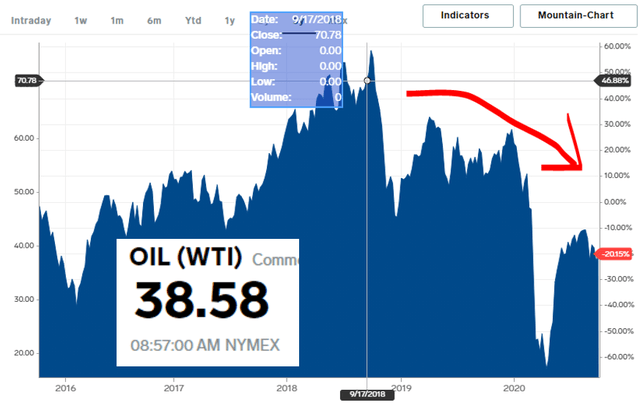
As you can see, there are assets divided by current assets, including their subcategories, as well as non-current assets and their respective sub-categories. Below that, you can see current liabilities and non-current liabilities with their respective subcategories. As an investor, you can review important financial statements from publicly traded companies through the Securities and Exchange Commission (SEC). When it comes to evaluating a company’s financial wellbeing, there are different types of financial statements to look at.
- Besides, any other limitation of other financial statements will also be transferred into the balance sheet.
- To put it plainly, the balance sheet shows you the budgetary situation of the business.
- The document is intended to provide an overview of a company’s finances at any given time, but balance sheets are not necessarily an accurate representation of the financial value of the business.
- All assets that are not listed as current assets, are grouped as non-current assets.
Total assets is calculated as the sum of all short-term, long-term, and other assets. Total liabilities is calculated as the sum of all short-term, long-term and other liabilities. Total equity is calculated as the sum of net income, retained earnings, owner contributions, and share of stock issued. Additional paid-in capital or capital surplus represents the amount shareholders have invested in excess of the common or preferred stock accounts, which are based on par value rather than market price. Shareholder equity is not directly related to a company’s market capitalization.
Financial Statements Are Not Adjusted for Inflation
Our editorial team does not receive direct compensation from our advertisers. (iii) Sometimes the historical cost of Balance Sheet does not convey any fruitful information to some users of accounting information. The balance Sheet compartmentalizes itself into different parts among which short and long-haul resources and liabilities are significant ones. Current and Long-term resources mirror the capacity of the business to create free incomes and keep up the activities.
It’s also possible for investors to review balance sheets of publicly-traded companies to determine their profitability. It’s important to understand the benefits of reviewing a balance sheet and understanding its limitations as well. As a stakeholder, you will have to compare the company’s balance sheet you are interested in with the balance sheet from the company’s competitors for several accounting years to make an informed decision. Sometimes, it can become tedious to compare a large volume of data in the various balance sheet. Besides, it takes other financial statements to compile a balance sheet. For instance, you will need the company’s income statement and also the changes in the equity ownership statement to prepare a balance sheet.
When balance sheet is prepared, the liabilities section is presented first and owners’ equity section is presented later. Our goal is to give you the best advice to help you make smart personal finance decisions. We follow strict guidelines to ensure that our editorial content is not influenced by advertisers.
Balance Sheet: Characteristics, Functions and Limitations
Similarly, the immensely talented designers and content writers employed at a highly profitable internet marketing firm are not reported as assets on the firm’s balance sheet because of the cost principle. This is also true for the firm’s brand names that resulted from effective marketing, highly satisfied service, and expertise in specialty services that are in great demand. Other items may gain more value like land and properties, but such changes are not reported in the balance sheet, which means that the total asset figures of a company may not be accurate at all times. It is more reliable in knowing the current market value of the various assets in a company rather than their value at cost. That figure is based on the judgement of the acquirer and not actual value that an analyst should fully rely on.
Historical cost is criticized for its inaccuracy since it may not reflect current market valuation. Assume that a company developed an internet business that now attracts millions of visitors each day and has $10 million in annual revenues and $6 million in net income. Since the internet business was not purchased from another company and its cost to develop was not significant, the company’s balance sheet will report only the business’s cash, receivables and some related payables. The balance sheet will not report the business as an asset, even though the company received multiple offers to sell the internet business for $30 million. A balance sheet is simply a snapshot of a company’s financial position at a given data.
It might also mean that there is a tax-loss carryforward being used to artificially increases profitability by reducing the amount the government takes. Once that tax-loss asset is depleted or has expired, ordinary tax rates will apply, again, and could cause net income to drop. The balance sheet equity line may include more than meets the eye and can be an important metric for investors to review.
Financial Statements May Not Have Been Verified
The rest of the balances of individual or genuine records speak to either resources or liabilities at the end date. These resources and liabilities are appeared yet to be a determined sheet in an ordered structure; the resources are shown on the correct side and the liabilities on the left-hand https://online-accounting.net/ side. Finally, the balance sheet can not reflect those assets which cannot be expressed in monetary terms, such as skill, intelligence, honesty, and loyalty of workers. Most of what the education system teaches us is that how to make a balance sheet as if the figures are fixed.
FedNow will expose fintech’s gaps: Compliance-by-design can help … – TechCrunch
FedNow will expose fintech’s gaps: Compliance-by-design can help ….
Posted: Tue, 05 Sep 2023 18:00:52 GMT [source]
If, say, a young software company is saddled with debt, that could be a red flag. That way you have all the information you need to make an informed decision, with all the data available for you to review. For instance, certain properties may be worth a certain amount during the time of purchase but lose their value over the years because of the company use like vehicles and furnitures. Misrepresenting a company’s actual position at a particular moment can enable a company to acquire more loans than what the company could have accessed in its actual position. It can be sold at a later date to raise cash or reserved to repel a hostile takeover. Some liabilities are considered off the balance sheet, meaning they do not appear on the balance sheet.
Sections of the balance sheet
It’s crucial for management to grow revenue while keeping costs under control. For example, revenue might be growing, but if expenses rise faster than revenue, the company may eventually incur a loss. Investors and analysts keep a close eye on the operating section of the income statement to gauge management’s performance. Money-related proportions infer by investigating the different segments of the balance sheet. Proportions utilize in the investigation of fiscal summaries to demonstrate the organization’s operational proficiency, liquidity, benefit, and dis-solvability. Budgetary proportions make it simpler to examinations the capital structure, stock cycle, and normal borrowers period in the event of reimbursement.

As noted above, you can find information about assets, liabilities, and shareholder equity on a company’s balance sheet. This means that the balance sheet should always balance, hence the name. If they don’t balance, there may be some problems, including incorrect or misplaced data, inventory or exchange rate errors, or miscalculations.
Components of a Balance Sheet
A liability is any money that a company owes to outside parties, from bills it has to pay to suppliers to interest on bonds issued to creditors to rent, utilities and salaries. Current liabilities are due within one year and are listed in order of their due date. Long-term liabilities, on the other hand, are due at any point after one year. The management team of a company may deliberately skew the results presented. This situation can arise when there is undue pressure to report excellent results, such as when a bonus plan calls for payouts only if the reported sales level increases.
So for example, a P&L statement may be for Q4, a balance sheet may be for one single day at the end of a particular accounting period. Indeed, you know that a company’s ability to boost its activity-based costing in healthcare saves millions revenue in the future depends on its good image and reputation. Like any other financial statement, the balance sheet has various limitations that can hinder effective decision-making.
Examples of Limitations of Balance Sheet
Once users can separate them from each other, they can be more aware of their limitations. However, they must also consider them as a whole as some disadvantages may apply to all. There are many other limitations of financial statements apart from those listed above. These limitations can significantly impact the decisions made based on those statements. There are various methods by which users can overcome the limitations of financial statements. These methods can apply to specific statements or all of them as a whole.
Pay attention to a company’s actions as well as figures in the balance sheet when assessing its value as an investment. Some companies may prioritize the management of metrics over the management of the company, to the detriment of the company’s bottom line. For example, given the steady revenues guaranteed by rate-setting boards, public utilities frequently employ large amounts of debt alongside equity. But if an electric utility has a lot of debt coming up for refinancing and interest rates are much higher than they are on the old debt, costs could rise, and profits could fall. This could lead to a high price-to-earnings ratio, which might mean that the stock price is overvalued relative to its earnings. A company’s balance sheet presents a snapshot of its assets, liabilities, and owners’ equity.
Our editorial team receives no direct compensation from advertisers, and our content is thoroughly fact-checked to ensure accuracy. So, whether you’re reading an article or a review, you can trust that you’re getting credible and dependable information. The offers that appear on this site are from companies that compensate us. But this compensation does not influence the information we publish, or the reviews that you see on this site.
Related posts
Operating vs Non-Operating Revenue
Bookkeeping : 04.08.2023 : 0 ComentariiSeparating non-operating from operating income provides stakeholders and users of financial statements with a clear image and better knowledge on […]
Invoice Factoring: Everything You Need to Know
Bookkeeping : 24.07.2023 : 0 ComentariiAfter this review, if you are approved, you will sign a factoring agreement and begin the factoring process. The factoring […]
What is virtual bookkeeping?
Bookkeeping : 28.06.2023 : 0 ComentariiContent Why QuickBooks What is BPO (Business Process Outsourcing)? What is the difference between Accounting and Bookkeeping? Create a free […]
Direct Material Quantity Variance Formula and Calculation
Bookkeeping : 18.05.2023 : 0 ComentariiWith either of these formulas, the actual quantity used refers to the actual amount of materials used at the actual […]